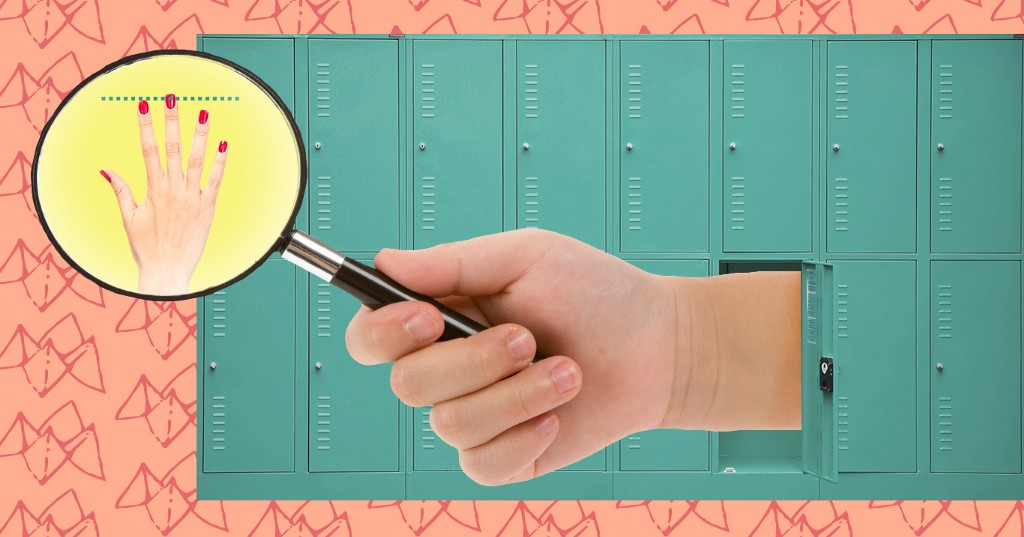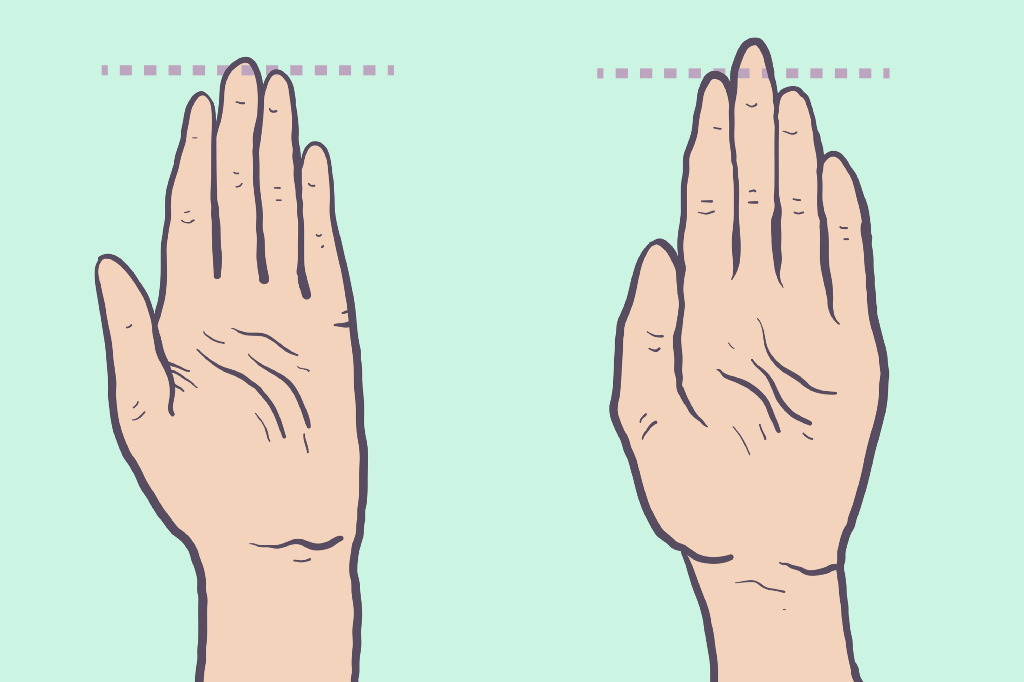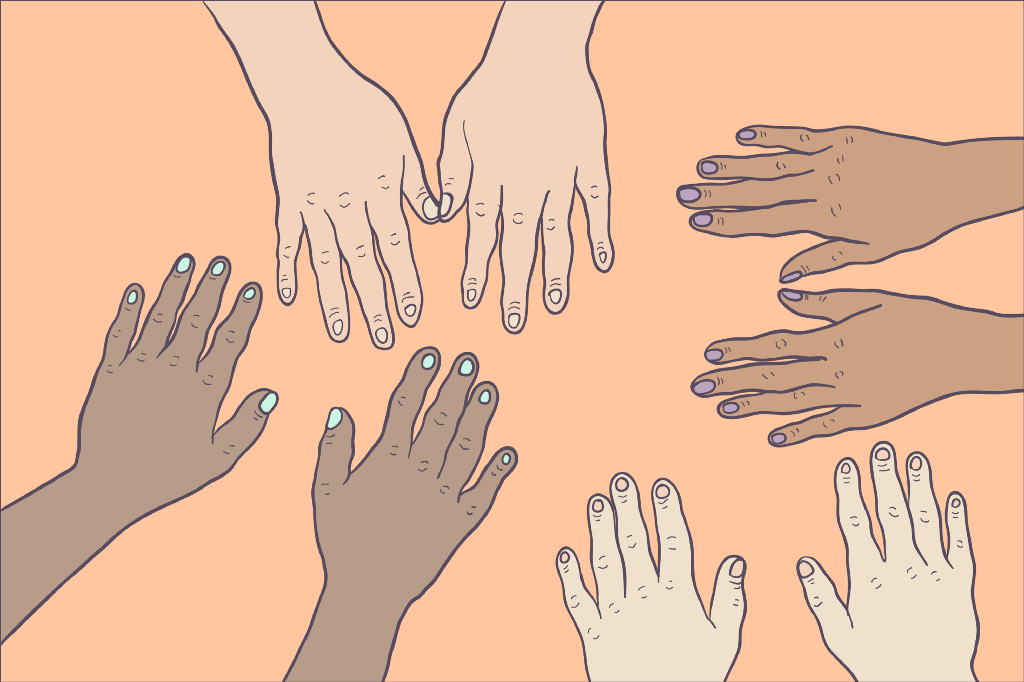Does Your Finger Length Predict Your Sexuality?
by elaine_anderson, 9 years ago |
5 min read

The surprising science behind grade-school gaydar.
Our Middle School Mysteries series investigates childhood rumors you never bothered to fact-check yourself. I’m in fifth grade, waiting in line for P.E. class. The girl in front of me turns around and says, “Hey, Elaine. Look at your fingernails.” I oblige, turning my palms up and curling my fingers toward me. “Ew. You’re a boy. Only boys look at their nails like that,” she says with that shady side-eye little girls are so, so good at. Between giggles, she informs me that real girls look at their nails with their fingers extended, back of the hand face up. It hurt my feelings but I didn’t know why. I knew I was a girl. But what I didn’t know — and perhaps she didn’t really know, either — was that by real girl she meant straight girl. I wouldn’t know the words lesbian, queer, or bisexual for a good long while.


✕
Do not show me this again
